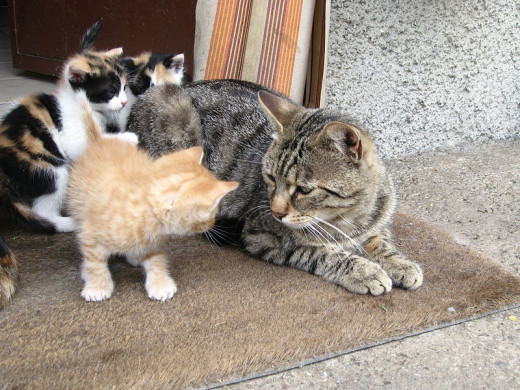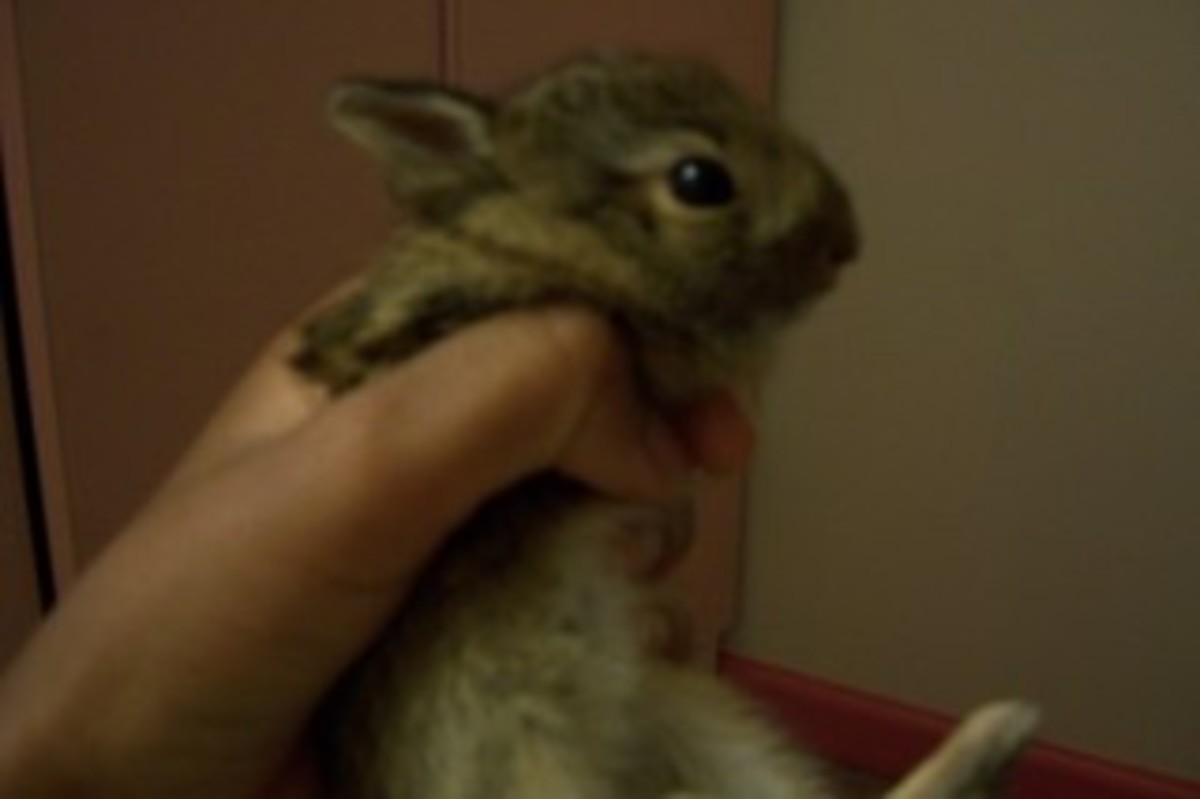Solutions to Unwanted Cats: Consideration for Owners Before Rehoming Your Cat

Cat resources from Amazon
A fellow hubber asked about how the number of unwanted animals in shelters can be reduced. Check the links section below for the hub dedicated to unwanted dogs. In this hub, I will address the issue of cat overpopulation, and some of the key things that must be in place to solve the problem.
Every year, millions of animals are euthanized in animal shelters throughout the United States. Of these, the vast majority is healthy and has good temperaments, there’s just no space or funds for their care. No one wants them. At the same time, millions of puppies and kittens are still being born to backyard breeders who either don’t understand the issue, or don’t really care.
In any given shelter, the number of cats euthanized far outpaces the number of dogs. In fact, in a nearby small-town shelter in Wyoming, four times as many cats were euthanized as were adopted in 2012. Large city shelters are likely to have even more abysmal numbers.
These animals are much more independent, offering them the ability to survive better without human intervention than the average domestic dog. A cat’s aloof behavior also sometimes keeps owners from bonding very closely to them, making it easier for owners to surrender them when they’re tired of cleaning the litter box. While cats can easily live for 20 years, few manage to make it that far. How can these unwanted cats be kept out of the shelters? As with any domestic animal problem, it has to start with cat owners.
Spay and neuter
Obviously, the first step in solving any pet overpopulation problem is to spay and neuter. If you have an unaltered animal, get it fixed even if it never leaves the house. An accidental escape could result in 5-10 unwanted kittens. If your cat does accidentally get pregnant, then get the mother and all of the babies fixed as soon as possible. In this way, the numbers of unwanted cats every year is slowly declining. Were everyone responsible with spaying and neutering, the entire overpopulation issue could be resolved within one cat generation.
Address feral cat populations
Cats live very well without human intervention, and as such many go feral. These cats are domestic breeds that live as wild animals. Most of them could never be tamed into housecats, but their colonies are still part of the problem. Catch-and-release programs are used in many areas to spay or neuter adult feral cats, allowing them to live out their days in the independence they’re used to. If the colony is in danger from humans or other animals, some of these adults might be relocated to country homes where they can live as barn cats. Young kittens can be caught, spayed or neutered, and tamed if the intervention occurs soon after weaning.
Micro-chip
The sad fact about a large number of cats that are euthanized in shelters every year is that somewhere, someone is looking for them. An unbelievable number of cats come in as strays, some after being on their own for weeks or months. If given the chance, cats can travel many miles and turn up in towns where their owners wouldn’t even think to look. In my own experience, a cat that travels 50-70 miles is not abnormal. One of my own cats rode on a truck from Loveland, Colorado, and ran off the truck in Cody, Wyoming. With this cat’s proclivity for sneaking into vehicles, there’s no telling where she may have originally come from. Her previous owners, if there were any, were never found.
Shelters recognize the problem of lost cats, and many offer micro-chipping for cheap or free when you adopt an animal. Regardless of where you get your cat, getting a micro-chip right away and keeping the information updated can help safeguard against losing your pet. Black cats are especially at risk, since their descriptions and pictures won’t stand out on lost pet listings, and many shelters euthanize black cats first because they’re the most difficult to find homes for. Even if your cat is an inside-only cat, there’s always a chance it can accidentally escape from the house. That micro-chip could save your cat’s life, and bring it safely back to you no matter how far it roams.
Educate about temperament
Too many people get a pet because it’s cute, or because they have misconceptions about its temperament. If you don’t care whether you get a puppy or a kitten, then you may need to do some additional research before you get a pet. Though both cats and dogs are extremely popular pets in the United States, their temperaments are almost polar opposites.
Where dogs are pack animals that readily accept humans as their alphas, a cat recognizes no alpha. These are sole hunters, hard-wired for independence and an aloof attitude. Your cat comes to you for attention because it wants it and likes it, not because the cat needs you. Many cats are surrendered to shelters because owners mistakenly believe that this aloofness means the cat hasn’t bonded with the family and isn’t happy. Actually, that’s just how cats behave.
On the same token, cats don’t need tons of time and attention like dogs do. A cat will happily exercise itself, and its nocturnal habits mean that the cat is perfectly happy to laze around in sun spots while you’re at work. You don’t have to feel bad for not having time to spend with the cat. As long as it has food, fresh water, and a clean litter box, the cat is not overly perturbed when you get busy and can’t spend hours petting and talking to it. In this way, they make excellent pets for people who are too busy for dogs or birds.
Video with great tips for adopting a new cat
Understand your cat’s needs
Cats are arboreal creatures, and have a need to climb and hunt. If you don’t offer cat trees or other elevated areas for your cat, it will just as readily climb your curtains for the lofty perch it craves. It also needs to claw things to keep its claws sharp and shoulder muscles toned. Declawing may seem like the only option, but it’s detrimental to the cat’s muscle tone, and largely considered cruel (see the link section below for a look at declawing). There are other options. Your vet can fit your cat’s claws with gel covers that can keep it from scratching furniture, small children, and other pets.
The cat is a hunter, and constantly keeps an eye open for small animals to catch and eat. On occasion, a caring cat will bring you a bit of prey as a sign of affection, as well as concern for your lack of hunting skills. It doesn’t understand why you wouldn’t like a tasty piece of mouse or bird dragged into your home. Keeping a cat inside or putting a bell on its collar can help reduce this problem.
Sadly, most owner-surrendered cats come to shelters because their owner doesn’t understand their needs. A precious few are because someone is moving or because of uncontrollable allergies. Before you rehome a cat based on its behavior, seek out advice from experienced cat owners or even shelter staff. It may be an easy fix, and keeping your cat out of a shelter will almost certainly save its life.
What do you think is the single most important thing that should be done to reduce the numbers of unwanted cats? Alternatively, if you’re a cat owner considering re-homing, please post your concern in the comments below.
The reality of euthanasia even in low-kill shelters. Irresponsible breeding leaves no other choice for shelter workers.
- Solutions to Unwanted Dogs in Shelters
Millions of dogs are euthanized in shelters every year. With a little better education and understanding, that number could easily drop. - The Cost of Ownership: What You Owe to Your Pet
Having worked with animals most of my life I'm constantly surprised at how easily many people enter into a big commitment...specifically, adopting a new pet. Thinking back I can remember many summer days sitting in front of the local grocery store... - A Testimony on the Importance of Spaying
Spaying and neutering is not only essential to keeping the overall pet population in check, it could save your pet's life. This is the story of Ding, a dog who nearly died simply because she wasn't spayed.








